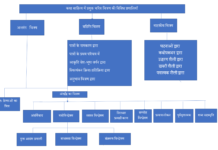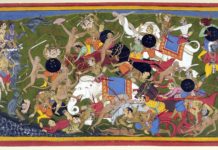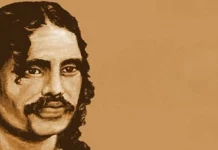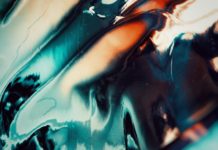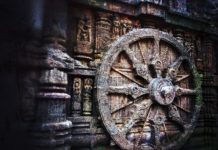Worship Śiva in Śaivacintāmaṇiḥ
Swati Sucharita Pattanaik
Ph.D Scholar,P.G Dept. Of Sanskrit,
Utkal University, Vanivihar,
Bhubaneswar, Odisha,751004
Email.id- swati94sucharita@gmail
Introduction
The text Śaivacintāmaṇi was taken up for editing in the year 1969 by Odisha State Museum. At the outset as an auspicious beginning of the ‘ Orissan Oriental Text Series (in Sanskrit) with a view to editing all the rare and valuable manuscripts of Orissan authors Preserved in the Orissa State Museum, presently called Śrī Jayadeva Orissa State Museum, Bhubaneswar. In addition, Bhubaneswar being the cathedral city and famous seat of Śaivism, it was considered necessary to edit the Śaivacintāmaṇi, followed in the performance of worship & rituals in Liṅgarāja temple as an authoritative guide book. The palm-leaf manuscripts of the Śaivacintāmaṇi are locally available in plenty of the manuscripts collected from different areas and preserved in the Orissa State museum, and were selected a dozen manuscripts for the purpose of editing. The editing was completed by Śrī Dukhisyam Pattanaik and it was published in the year 1994 from the Directorate of Culture, Government of Odisha, Bhubaneswar-751014. The Śaivacintāmaṇi was written by Lakṣmidhara Miśra, who was also the author of the Śaivakalpadruma. Lakṣmidhara’s Śaivakalpadruma(Dh.33) preserved in the Dharmaśāstra section of the Odisha State Museum. This was found to be copied in 38th Aṅka of Vīrakeśari Deva I (1766 AD) seems to have been composed towards the last quarter of 17th century during the rule of Gajapati Mukundadeva. It is known that Lakṣmīdhara Miśra, an ardent devotee of the then Śiva of Svarṇādri i.e.Bhubaneswar was an inhabitant of Bhubaneswar.
Śaivacintāmaṇi seems to be a work of Lakṣmīdhara at his ripe age, when he was sorrow sticken through his growing experience in this world of miseries and worries. As such it may probably be a work of the last decade of the 17th century as decided by the editor.
Śaivism is one of the major traditions with Hinduism that reverse Śiva as the Supreme Being. Worship lord Śiva on Monday, devotees should visit Śiva temple on every Monday with a clean mind and body and should prayers. After taking a bath, one should offer milk and honey to Lord Śiva. It is believed that doing this, the problems related to livelihood job or business gets eliminated.
After that, devotees should perform Abhiṣeka of Śiva liṅga by bhasma and water. After abhiṣeka of Śiva liṅga, one should offer sandalwood. The nature of sandalwood is cold and its believed that by doing so, life becomes peaceful and full of happiness. One should keep on chanting this mantra- “Om mahā Śivay somay namḥ.”
The devotees should offer flowers and fruits to Lord Śiva and also should perform Śiva ārati. The prayers should be offered with pure heart and faith. Later, devotees should accept caraṇamṛt, which is offered by the priest as a prasāda. Lord Śiva, is considered to be the most divine among all Hindus gods. “ Mahādev” which means greatest god is another name given to him. In the Hindu religion, Lord Śiva is also considered to be the father of the whole universe.
Some of the common items used for Śiva abhiṣeka are
Curd,Milk/ water,Honey,Tender Coconut water, Vibhūti (holy ash), Paṅcāmṛta (curd based delicacy consisting of paṅcha items:( Milk, Sugar, Ghee(clarified butter) Honey, curd),Bananas,Sandalwood paste,Ghee (clarified butter),Haldi, Fragrant oils,Bilva leaves (vital importance).
While selecting Bilva leaves make sure the cakra and the Brajra should not be there. The cakra is white mark made by the insects on the Bilva leaves while the bajra is thick portion towards the stalk. The Bilva leaves used in Pūja should be 3 leaves let’s even if one of the leaves gets detaches of three leaves then it is of no use.
Flowers offered
There are many flowers offered in the ritual of worshiping Lord Śiva. Out of those some flowers are very common and special at the time of offering. Dhatura became Lord Śiva’s favourite flower. Hence, Dhatura is offered to Lord Śiva during worship to get rid of the poision of ego, rivalry, envy and hatred. Some other flowers like akand, sevati1, malī2,yūthī3, mālatī, karavīrak, palāśa, pāṭalī, campā, mandāra, Blue lotus4 (or pink lotus/ white lotus) flowers are auspicious.Ketakī flower is never used in the worship of Śiva.
Fruits offered
There are many fruits offered in the ritual of worshiping Lord Śiva. Some fruits are very common and special at the time of offering. Sāla5, tālaka,hintāla, piyāla, saralāmalai, nārikela6, āmra, panasa, Śrī guvāka, kapitthakai.
Worship in Śaivacintāmaṇi
The devotee of Śiva to be pure in mind and also in body by bathing daily in the water of Śiva-Gaṅgā7 and then besmearing one’s body with the sacred ashes and by putting the three-line mark on the fore-head and by wearing a necklace of rudrākṣa8 as a sign of devotion. An area with one mile in radius from an established liṅgaṃ is called ‘Īśa-kṣetra9’ and all the reservoirs of water therein towards the north, may it be well or a pond or a river, whatsoever is considered sacred ‘Śiva-Gaṅgā’for the sake of purification through bath.
- Liṅga Worship
Pūjā seems to have been the main-or perhaps the only form of worship in respect of the liṅga. It may be mentioned in this connection that the pujā of the liṅga did not differ from other types of pūjā.
Different types of liṅgaṁ and their importance in the worship of Śiva. Of all, the Bāṇa-liṅgaṁ10 is egg-shaped and does not require any invocation (āvāhana)25 or installation (pratiṣṭhā) in a ritualistic manner. Then description of liṅgaṁ made of crystal and gems etc. is given for knowledge of the readers. Ritualistic worship of different liṅgaṁ for the fulfillment of six desires through the Ṣat–karma viz.Vaśikaraṇa11 (winning over), Mohana12 (fascinating), Stambhana13 (arresting), Uccātana14 (explusion), Vidveśana15 (causing enmity) and Māraṇa16 (causing death) by tantric manner is also prescribed. Guru one may write a particular Mantra on a palm-leaf or on a silver plates on the thirteenth lunar day of a bright fortnight and place it on a pedestal and worship ‘Dakṣiṇaliṇgamūrti–liṅgaṁ17’.
(ii) Dakṣiṇaliṇgamūrti-liṅgaṁ worship
Dakṣiṇaliṇgamūrti-liṅgaṁ by offering rice boiled in milk . The place, the food, the seat that are required for the divine practice of japa18 or recitation of a mantra are mentioned in detail in the verses. It also speaks of the rosaries and their use in this connection.
Daily divine practices of devotee (nitya kṛtya)
This practice is called as nitya kṛtya as described in the text of Śaivacintāmaṇi. It is described in the following manner. A devotee of Śiva should get up early in the morning with his mind on Śiva, rinse his mouth out with the repeat of the letter ‘va19’ symbolizing ambrosia for ten times, putting his sacred thread on the right ear go out for passing the urine and stool facing towards the north, clean his anus first with grass and then in water, wash his teeth and then bathe by invoking the sacred rivers like the Ganges and others in the water for the purpose, put on an under-garment tucked into the waist band at three places (tri kacchā) and also an upper garment, put on mark sandal(Tilaka) over the three lines of ashes (Tri puṇḍra) on the forehead and other places of the body, sip water with ‘aghora mantra20’ for the sake of internal purification, pray the mother earth to hold him prayer by sitting on a comfortable position, perform the pūjā (worship) of Śiva in the order prescribed in the text.
Śiva’s five form of worship
The forms are described in different ways according to the influence of different Purāṇas. The figure and form Lord Śiva is sometimes in Liṅga worship along with Śakti. The height is small or big depending on the cases of the purāṇic legends. His form with five faces viz. Īśāna38, Tatpuruṣa, Aghora, Sadyojāta and Vāmadeva is indicated for worship. Īśāna, Tatpuruṣa, Aghora, Sadyojāta a nd Vāmadeva were themselves regarded as possessing the character and authority of mantras. In the ritual texts they designated as Pañcabrahma-mantras or saṁhitā-mantras. The mantras which constitute a complement of these five and which refer to the six parts of the body, namely the hṛdaya, śiras,śikhā, kavaca, netra and astra, are called the Ṣaḍaṅgamantras.
Pāśupata worship
The text Śaivacintāmaṇi’s fifth paṭala describes the ‘Pūjā’ (or worship) beginning with the invocation (āvāhanaṁ) of the Lord to the ending in giving send off (visarjanaṁ) to the lord invoked. Here again detailed prayer to each of the five faces of the lord mentioned above substantiate the prevalence of ‘Pāśupata’system of worship over others in the state of Orissa. The description of ‘āvāhana pūjā’ again in this paṭala is a strong point.
Mantra and Japa
The worship of Lord Śiva involves various invocations for purification of mind and cleansing of all kinds of impurities. It is said that one should be one with this spirit of surrendering oneself to the lord completely. One should worship the great god Maheśvara, with concentrated mind, having became Bhava, with mantras, Rudragāyatrī, Oṁ, Īśāṇa, Rudra, Tryambaka with flowers. Leaves, water, sandal etc. After saying ‘namaḥ Śivāya’ with this mantra one should do a recitation. Then one should do a circumambulation…. One should meditate.
The pañcākṣaras are the five sacred syllables which express obeisance to Śiva, and in the Purāṇas they are regarded as superior even to Veda. It is the mūla mantra, the most fundamental of all the mantras associated with Śiva. It is only on becoming properly initiated by means of these rites that a devotee can engage himself in the pūjā of Śiva.
The term mantra was originally applied to a Ṛgvedic prayer, an atharvaṇic incarnation or a ritualistic formula. In Śaivism, it denotes all utterances which possess the characteristics of one or more of these three: prayer, incantation or ritualistic formula. Generally speaking, the Śaivites regard as mantras all utterances- whether Vedic or non-Vedic which relate to the god and the vocalization of which helps the worshipper to meditate upon course of worship. The Vedic mantra s are no doubt given great prominence, and they generally gain precedence over other kinds of mantras, except the pañcākṣara– mantra, which according to the Śaiva view point actually represents the very quintessence of the Vedas. The five mantras relating to the five aspects of Śiva, being Vedic in origin, are also assigned a prominent place in the worship of Śiva.
But as indicated above, the five syllables Śi-vā-ya-na-maḥ form the mantra par excellence of the Śaivites. This mantra is often called pañcākṣara. This is the mūla-mantra of the god, and is invariably employed when rites of high significance such as āvāhana or prānapratiṣṭhā are performed. The mūla mantra is repeated by way of japa.The Kurma Purāṇa narrates how Nandin once became over powered with a strong longing to recite japa of the pañcākṣara. The desire was granted in this manner Nandin accomplished five rounds of japa, after which Śiva stopped him from the continuation of his strenuous penance and elevated him to higher ranks.The most famous six syllable mantras of Śiva very powerful. Who read everyday six syllable mantras21 fulfill all wishes.
The sacred syllable oṁ may be ranked next to the Vedic mantras and the pañcākṣara. The Upaniṣads identify oṁ with the higher self. The ritual texts and the smṛtis refer to it as the sacred syllable which is always to proceed the recital of the Vedas and the repetition of the gāyatrī
Prayer related to six letters of the mantras of Śiva. It gives emphasis on the japa of the five- lettered mantra of Śiva. The ‘Oṁ-kāra’ or ‘praṇava’ added to the ‘ Śiva -paṅcākṣara’ becomes a six –lettered mantra of Śiva. 7th paṭala the sacrifice with the kindling of ‘Śivāgni’ is described. In the end of the author remembers the names of twelve devotees of Śiva with respect as follows, viz. Bāṇa,Bhīma, Pṛthvī,Rāmachandra, Parśurām, Kārtikeya, Śrīkṛṣṇa, Upamanyu, Śatamukha, Asita, Rāvaṇa and Taṇḍi.
Puja
The Epics and the Purāṇas speak for the first time of pūjās a form of worshipping gods. Generally speaking, this form of worship seems to have been originally restricted only to the great gods, with the exception of Brahmā. The Sun god is sometimes identified with Śiva and sometimes with Viṣṇu; probably on account of this identification this god also is offered Pūjā. Thus the pañcāyatanapūjā, that is to say, the worship of the five gods Gaṇeśa, Sūrya, Viṣṇu, Śiva and Śakti has been widely prevalent all along. This pañcāyatanapūjā must be dated back to fire early times, for the god Śiva himself is said to have started it. In as much as the Śiva-pūjā itself is concerned, its popularity becomes quite evident from the many references to it occurring in the epics and the Purāṇas.
By and large, pūjā as reflected in the Epics and the Purāṇas may be equated with upāśanā, saparyā, āradhanā, or arcanā. This form of worship involves the employment of a variety of pujopakaraṇas and pūjāsaṁbhāras. These many kinds of utensils, flowers, sandalwood, dhupa, dīpa, and various articles of upacāra like darpaṇa, chatra, cāmara, vyajana, patāka and tālavṛnta. Śaṅkha and ghaṇṭā are also mentioned as accessories of the pūjā. Over time, the pūjā rituals came to be further elaborated. The idol of the divinity constitutes the essential basis of all pūjā rites. Vedic mantras were often recited to accompany these rites. For instance, Vedic Mantras were recited when the idol was bathed or when the naivedya was made and upacāras were offered to it. Thus, the same kind of connection was attempted to be maintained between the pūjā and the Vedic chanting.
The pūja form of worship which in its initial stages was pre-sum ably more or less simple became more and more elaborate, particularly in the case of Śaivism. The Āgamas seemed to have paved the way for such an elaborated system of worship. Stating that Śiva could be conceived and worshipped in various ways. The main Āgamas, namely, Kāraṇa, Kāmika, Suprabheda, Raurava and Ajita, have described in detail the various images of Śiva. They also describe the rituals relating to the installation (pratiṣṭhā) of these images. These Āgamas concern themselves for the most part with the rituals relating to these images. Such rituals are of two kinds, those which are to be performed daily (nitya) and those which are to be performed on special occasions (naimittika). The process of elaborating upon the Śaiva pūjā ritual which seems to have been stated in the Purāṇas may be said to have reached its culmination in the Āgamic Śaiva rituals. In these works we only see the pūjā ritual in its early development and growth. As a matter of fact, the epics make but very curt references to this worship.
On the other hand, the importance of pūjā is fully realized and frequently proclaimed in the Purāṇas. In the following statement from the Liṅga purāṇa. Viṣṇu is described to have worshipped Śiva with flowers to the accompaniment of the recital of the one thousand names of Śiva. The importance of upāsanā in general is pointed out in the Liṅga Purāṇa, but special emphasis has been placed there on the Śiva pūjā. The Skanda Puraṇa gives a detailed description of the Śiva pūjā. The advantages of worshipping Śiva and the disadvantage of not worshipping him are often recounted.
One should worship gods with his own mantras, with flowers, leaves and water, Brahmā Śankara…”
Flowers, dhūpa, dīpa and naivedya are often specially mentioned as the requisites of the pūjā. Pujā with gandha, Puṣpa and akṣta is found in the Śiva Purāṇa. Various other aspects of the pūjā such as namaskāra, pradakṣiṇa and nyāsa are found in the Purāṇas22. Bhūtaśuddhi and nāḍīśodhanā are among the rites mentioned in the Devīgavata-Purāṇa.
In this chapter, such as yajña, tapas, tīrthas, stotras, dhyāna and vrata, are harmoniously blended into the pūjā ritual, and we find a reflection of all with the fully developed form of that ritual, best recorded in the Āgamas. It is this fully developed form of pūjā which is prevalent in the temples of the South. As mentioned elsewhere, the Āgamas, regarded as the principal authoritative texts dealing with the pūjā ritual, are 28 in number. The Āgamas have given rise to several manuals or paddhatis which help the worshipers with many practical details in connection with these rituals.
The worship of Śiva an indication of some of these has already been describe. A few more may be referred to at this stage. The bilva tree, for instance, is represented in the Purāṇas as being sacred to Śiva, the triploid leaves of the tree are therefore offered to the god in pūjā. Similarly, bhasma (holy ash) is mentioned in the Purāṇas being of high significance to Śaivites.
Worship of Śiva in LiṅgrājaTemple
Odisha is famous for Śiva worship since many centuries. In Bhubaneswar only there are more than five hundred Śiva temples in which Śiva liṅga is being worshiped.According to the traditional accounts of Mādalā Pāñji the temple of lingarāja was built by Yajāti Keśari, Ananta Keśarī and Lalāṭendu Keśarī. Some consider the last two names to be two other names of Udyota Keśarī Caṇḍihara Yayāti-II( C.1020-1040) began to build the Liṅgarāja temple, which was completed by his son Udyota Keśarī (C.1040-1065). The temple of Brahmeśvara was built just before the construction of the temple of Liṅgarāja. Accumlated and crystallized experience of several Centuries of preparation to put up temples of Śiva under the Śailodbhavas, the Bhaumakaras and the Somavaṃśīs resulted in the culmination of the Liṅgarāja temple.
Liṅgarāja is called the king of liṅgas, not because of the reason that it was huge or big in size but because it is worshipped according to the śāstras in a great grand temple built in an artistically excusite style. We do not find a huge temple of 148ft. in height. The reason for this the Śaivacintāmaṇi offer is that the liṅgaṁ found in the shape of some pebbles is a ‘svayambhu–liṅgaṁ’ that has appeared on the spot of his own accord. The liṅgaṁ in brilliance at base is like the crystal, at the middle it is deep blue and at the top it is red like the ruby Hence, it is called the ‘ Trī- Bhubaneśvara’ or the lord of the three worlds.
In the temple, everyday the idol of Pañca-Vaktra-Śiva is worshipped.Still then, every temple maintains its own tradition of worship and Śaiva-cintāmaṇi is the authoritative text to keep up the tradition of pūjā of Liṅgarāja in the temple in Bhubaneswar.
If one worships Lord Śiva everyday, then he attains peace, happiness, good health, wealth and prosperity in one’s life. Lord Śiva is considered to be the father of whole world in Śaivite tradition. He is accepted as the most divine among all gods and Goddesses. The devotees called Him as ‘Mahādeva’.
The eighth Paṭala gives a vivid description of the tradition and practice involved in having a darśana of Śiva in the temple of Lingarāja in Bhubaneswar. As regards the circumbulation, A Yati or Sanyāsin should move in right direction by keeping the Lord to his left, a Brahmacārin or celebrate should move in the left direction by keeping the God to his right side and the house-holders should move in the left direction first by keeping the god towards their right side and go upto the outlet for water of the main temple on the northern side and then again return by keeping the Lord in the temple towards their left side and thus perform the circumbulation. In the end it adds beautiful prayers of Śiva in simple language. It also mentions to offer different kind of flowers to the god in different lunar months. Then it attaches importance to the observance of the ‘Śiva- caturdaśī-vrata23’ and describes it. Then the author with his own introduction in a secretive tantric manner in the end completes the book ‘Śaivacintāmaṇi’ for the firm devotion of the devotees towards Lord Śiva.
Conclusion
The Śaivacintāmaṇi text is fully devoted to the rituals and glorification of Lord Śiva in this text there are descriptions related to the glorification as the Lord of the Universe. He is supposed to give full protection and blessings to the devotees in Śiva tradition. Starting from the Vedic age Rudra is known as main power house of knowledge and wisdom. Many Purāṇa have glorified lord Śiva in various manner from time to time. This style of Worship is sometimes different and considered to be unique in local importance. This is because of local customs and traditions so also it happened exactly in that manner. In case of Liṅgarāja of Bhubaneswar.
In this text the uniqueness of Lord Śiva is described through local mode of worship following Purāṇic tradition of Śaiva tradition
References
- sevantīmaliyūthībhirmālatīkaravīrkaiḥ
- Ibid sloka-7 Śaivacintāmaṇiḥ
- Ibid
- nīlatpalābjakumudairūrdhvā līdhamadhuvrataiḥ/
- śālatālaka hintālapiyālasaralāmalai/
- nārikelāmrapanasaśrīguvākakapitthakaiḥ/
- nityaṁ snāyadatha śivamanāḥ śaivagaṅgā jaleṣu/
- rudrākṣāntrai hyaghakulabhidaḥ śambhubhaktyā dadhīta/
- liṅgotkośārdhaka mapi bhavet kṣetramaiśaṁ svayambho/
- tatsānnidye himakaraśirastatra nāvāhanaṁ hi /
- vāṇaṁ liṅgaṁsakala sukhadaṁ kukkuṭasyāṇḍavadya/
- Śaivacintāmaṇiḥ sloka-20
- Ibid sloka-23
- Ibid
- Ibid
- Ibid
- datveśaṁ pāyasamapi śataṁ dakṣīṇamūrtiliṇgāt/
- sthānaṁ vakṣe japaphaladakaṁ cātha karturjapasya/
- mukhaṁ va kāraṁ daśaḍhātha japtvā/
- aghoramantraṁ daśadhātha japtvā/
- Śaivacintāmaṇiḥ sloka-104,105,106, 107,108, 109
- Cf .MatsyaP., 54.8-23
- Śaivacintāmaṇiḥ sloka-37
Bibilography
- Bhatt,N.R.,(2008), “Śaivism in the Light of Epics,Purāṇas and Āgams”, Indica Books D40/18 Godowlia, Varanasi.
- Chakrobarti, Haripad,(1970), “ Pāśupata Sūtram (Eng. Translation), Academic Publishers, Calcutta.
- Pattanaik, Dukhisyama, (1994), “Śaivacintāmaṇi”, Directorate of Culture, Orissa, Bhubaneswar- 751014
- Pattanaik, Devdutt,(2017), “Śaiva to Śaṅkara,” Harper element,An imprint of Harper Collins Publishers and Indus Source Books.
- Pattanaik, Devdutt,(2017), “7 Secrets of Śiva” west land publications ltd.
- Mishra, K.C.,et.al, (1993), “Sudies in Śaivism”, Institute of Orissan Culture Vivekananda Marg, Bhubaneswar – 751002, Orissa.
- Kumar,Brothers, (1990), Phallism in Ancient Worships Westropp and Wake”, Delhi.
- Shastri,L.J., (1990, rpt.), “Liṇga-Purāṇa(Ancient Indian Tradition And Mythology),” Translated by A Board Of Scholars,(Vol.5,p-1), Motilal BanarasiDass Publishers Private Limited, Delhi (1st ed- 1973)
- Shastri, L.J., (1996),“Śiva Purāṇa (Ancient Indian Tradition And Mythology)”, Translated by A Board Of Scholars,(Vol.1,p-1), Motilal BanarasiDass Publishers Private Limited, Delhi (1st ed- 1970).

